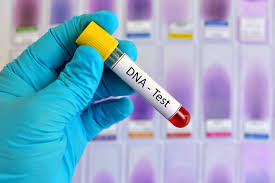Prenatal paternity testing, which determines a child’s biological father, is becoming more and more popular in forensic applications. SNP genotyping of cell-free DNA in maternal peripheral blood using high-through next-generation sequencing (NGS) is now one of the safest and most effective Non-Invasive Prenatal Paternity Testing (NIPPT) procedures available. As far as we are aware, practically every technique employed in these applications is based on conventional postnatal paternity testing.
NIPP Testing
Before a baby is born, prenatal paternity testing determines if a man is his biological father. Chorionic villus sample, amniotic fluid sampling, or umbilical cord blood collection by amniocentesis are necessary for traditional prenatal paternity testing. Because amniocentesis is often administered after the 16th week of pregnancy, it is an invasive procedure that bears a risk of miscarriage and fetal limb abnormalities. According to the most current official figures, single moms give birth to 40.3% of all babies born in the US. A married lady can also be uncertain as to whether her spouse is her child’s biological father. You’re not alone if you’re a lady who fits into one of these categories; you could benefit from a non-invasive prenatal paternity test or DNA test.
Working of non-invasive prenatal paternity
Fetal DNA is found in the mother’s blood throughout pregnancy. Sequencing and analysis of cell-free fetal DNA collected from the mother’s blood can be used to establish paternity. Only a blood sample from the mother and the putative father is needed for this non-invasive test, which is safe for both the mother and the unborn child. Other invasive prenatal DNA testing techniques carry hazards, including miscarriage and amniotic fluid leaking.
-
DNA is obtained from the mother with a straightforward blood sample, and from the potential father, a cheek swab is used to get DNA.
-
After that, the lab receives both samples for examination.
-
The test examines the mother’s plasma for free-floating fetal DNA and compares it to the mother’s DNA profile.
-
After identifying the fetus’s profile, paternity can be established by comparing it to that of the potential father.
-
Once the test has started, results for the prenatal paternity test are usually available within one week. If the man who was tested is found not to be the biological father, the result indicates a 0% likelihood of paternity.
-
A 99% or higher likelihood of paternity is indicated in the report if the individual who underwent testing is accepted as the biological father.
The Science Underpinning Non-Invasive Prenatal DNA Testing
You can opt to find out who the father is almost right away once your pregnancy is confirmed because the test can be done as early as the seventh week of pregnancy. In contrast to old-fashioned techniques such as amniocentesis or the potentially miscarriage-causing CVS (Chorionic Villus Sampling) test, prenatal DNA testing is totally non-invasive and safe for both the mother and the fetus.
NIPP test Results
To establish paternity, the Non-Invasive Prenatal Paternity Test examines single nucleotide polymorphisms (SNPs), which are changes in DNA. The number of variants found in each chromosome for the unborn child and the number of variations that match the purported father is indicated by the SNP number on the report. The numbers for each chromosomal row for the child’s SNPs and the putative father’s SNPs are the same when the fetus and the alleged father match. These figures show the number of SNPs found in the fetus and the number of those SNPs found in the sample of the purported father.
The results of a nipp test report can either indicate that the man who was tested is not the biological father, i.e., the test suggests that the man is not the biological father, or that the man who was tested is not excluded, i.e., the test indicates the man tested is the biological father. If every marker tested showed a 100% match between the kid and the purported father, the guy tested positive for biological fatherhood.
Conclusion
Choice DNA Tests provide a clinically accessible, extremely accurate, noninvasive prenatal paternity test. In conventional postnatal paternity testing, single tandem repeat sequences are analyzed and compared to putative dads. Measuring robustness and achieving very reliable paternity findings only requires 15–20 single tandem repeat sequences, as substantial quantities of intact genomic kid DNA are accessible postnatally.
